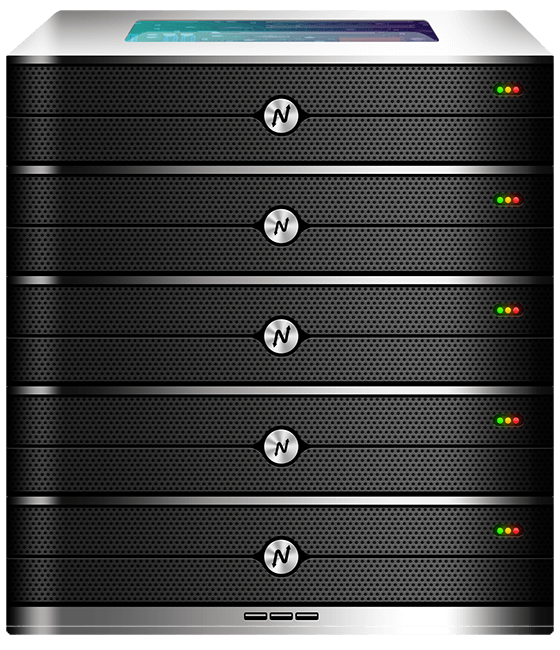If you run Java web applications, choosing the right tomcat hosting matters for performance, uptime, and developer velocity. Tomcat is a lightweight, widely used servlet container that powers everything from small web apps to large microservice endpoints. That makes tomcat hosting a core decision for engineering and operations teams everywhere. Hosting in India with a provider like XenaxCloud brings clear advantages: cost-effectiveness, lower latency to Asia-Pacific users, strong security controls, and easy scalability for global growth. In the next sections you’ll get a practical, non-technical guide to selecting plans, configuring Tomcat for speed and security, and scaling without surprises.
How to choose the right Tomcat hosting plan
Choosing tomcat hosting starts with workload profiling. Identify memory and concurrency needs, expected requests per second, and whether the app uses disk-heavy operations such as large file uploads or database writes.
For small to medium Tomcat apps, a VPS with dedicated vCores and NVMe storage is usually the best balance of cost and performance. Consider XenaxCloud’s Speed KVM VPS options when you need low-latency NVMe storage for session stores or database caching. Recommended starter plans include Speed KVM VPS 1 — 2 Vcore CPU, 4GB RAM, 40GB Storage, 2TB Bandwidth, $4.79 for dev and staging, and KVM VPS 2 — 4 Vcore CPU, 8GB RAM, 50GB Storage, 2TB Bandwidth, $8.39 for production microservices.
If your Tomcat application demands strict isolation or very high I/O, consider dedicated instances or higher-tier KVM VPS such as KVM VPS 3 — 8 Vcore CPU, 16GB RAM, 70GB Storage, 4TB Bandwidth, $14.39. For Java applications, RAM is frequently the bottleneck because heap sizes and garbage collection directly affect latency, so always size for headroom rather than tight fit.
Key selection checklist for tomcat hosting:
- CPU: prioritize vCores for compute-bound servlets.
- RAM: allocate enough for JVM heap plus OS (avoid swapping).
- Storage: NVMe for low-latency DB/cache I/O.
- Bandwidth: sized for peak traffic and file transfer patterns.
- Backups and snapshots: ensure point-in-time restores for stateful apps.
If you prefer managed control panels or easier scaling, pair VPS-origin servers with XenaxCloud’s domain and shared hosting options for static assets. For deeper control, use the VPS product page to match exact specs and upgrade paths. https://xenaxcloud.com/vps-server/

- 4 GB RAM
- 40 GB SSD Storage
- 2 TB Bandwidth
- 1 IPV4 & IPV6
Tomcat hosting performance — speed, uptime, and security
Performance and uptime for tomcat hosting depend on both infrastructure and how you configure Tomcat and the JVM. A few practical rules improve runtime stability.
Tuning JVM: Select G1GC or ZGC (depending on Java version) for low-latency GC pauses, and set heap sizes with headroom to avoid out-of-memory events. Monitor GC logs and use JMX or Prometheus exporters to track pause times.
Thread and connector tuning: Configure Tomcat Connectors (NIO2/APR) to match expected concurrency, and avoid extremely high maxThreads without corresponding CPU and memory capacity. Use connection pooling for database access (e.g., HikariCP) to reduce latency.
Storage and caching: Use NVMe-backed volumes for session stores, small databases, or embedded caches to keep I/O latency predictable. When serving static assets, offload them to a CDN and keep Tomcat focused on dynamic workloads.
Uptime practices: Implement health checks and process supervisors (systemd) to restart Tomcat on crashes. Use load balancers and multiple tomcat hosting nodes for redundancy and rolling updates.
Security essentials: Always run Tomcat behind an HTTPS-terminating reverse proxy and enable secure headers. Disable or restrict the manager app and default examples. Enforce least privilege for the Tomcat service account and use SSH keys for server access. For compliance-heavy apps, choose Indian data centers that support local regulations and international standards.
A properly sized XenaxCloud KVM VPS paired with best-practice JVM and Tomcat tuning delivers reliable performance for most production Java workloads.
Real-world use cases for Tomcat hosting
Tomcat is versatile; here are common production scenarios and ideal hosting matches.
- Enterprise web apps and internal portals — often stateful, database-backed apps that benefit from isolated KVM VPS plans such as KVM VPS 3 — 8 Vcore CPU, 16GB RAM, 70GB Storage, 4TB Bandwidth, $14.39 to allow generous heap sizes and background job processing.
- Microservices and APIs — stateless, horizontally scalable services are a great fit for multiple Speed KVM VPS 1 or 2 instances behind a load balancer. Keep session state in Redis or a database to make scaling smooth.
- SaaS platforms — require predictable performance, backups, and monitoring. Use KVM VPS 4 or higher for large JVM heaps and pair with object storage for media and backups.
- Development and CI runners — use lower-cost plans like Speed KVM VPS 1 for ephemeral testing and CI pipelines.
- Legacy Java apps — often require older JVM versions; a VPS lets you control the exact runtime while using modern networking and security features from XenaxCloud.
Each use case benefits when you match the workload to the plan: lightweight apps on shared or entry-level VPS, and mission-critical services on mid to high-tier KVM VPS or dedicated servers for maximum isolation.
Indian servers are a smart choice for global Tomcat hosting
Indian hosting infrastructure has matured. For teams serving APAC customers or running regional business logic, Indian tomcat hosting provides distinct benefits.
Cost-effectiveness: Operating costs and bandwidth in India are competitive, which lets you allocate budget to compute or storage when needed.
Low latency in Asia and competitive speed globally: A Tomcat origin in India reduces round-trip time for users across South Asia and Southeast Asia. Combined with a CDN, it maintains competitive global performance.
Security, reliability, and compliance: Modern Indian data centers offer robust physical security, DDoS protection, and compliance options. Pairing Tomcat with these features keeps your application safe and enterprise-ready.
Scalability for international businesses: Providers typically offer API-driven provisioning and vertical upgrades, enabling quick scaling of tomcat hosting nodes to meet demand.
In practice, a hybrid approach works best: host origin Tomcat servers in India for APAC users and use a CDN and multi-region DNS for global reach. This balances performance and cost while keeping deployment and management predictable.
Scalability options for startups and agencies using Tomcat hosting
Scaling tomcat hosting can be vertical or horizontal.
Vertical scaling raises resource levels on a single instance — increase vCores, RAM, or storage. This is simple and useful for short windows of increased load, but has limits and may require downtime for some upgrades.
Horizontal scaling adds more Tomcat nodes behind a load balancer. Make your app stateless by storing sessions in Redis or a database. Use rolling deployments or blue-green strategies to update services without downtime.
Autoscaling: While many VPS providers offer snapshot and provisioning APIs, autoscaling Tomcat fleets requires orchestration. Containerized Tomcat in Kubernetes or container platforms simplifies horizontal scaling and lifecycle management, but increases operational complexity.
Practical approach for most teams:
- Start on a VPS (Speed KVM VPS 1 or 2) for predictable budget control.
- Move to KVM VPS 3 or higher as concurrency increases.
- Introduce a load balancer and externalized session store for horizontal scaling.
- Use configuration management (Ansible/Terraform) to automate provisioning and keep environments consistent.
These patterns let startups and agencies grow predictable, maintainable tomcat hosting environments without major architecture rewrites.
Comparison: Indian servers vs US, Canada, Germany, UAE for Tomcat hosting
| Metric | India | US/Canada | Germany | UAE |
|---|---|---|---|---|
| Latency to APAC | Low — ideal for Asia users | Higher to APAC, lower to Americas | Moderate — best for Europe | Good — serves Middle East and APAC |
| Provisioning & support | 24/7 regional support, fast provisioning | Global options, broad managed services | Enterprise SLAs, compliance focus | Localized support and fast provisioning |
| Reliability for production | High — redundant backbones and peers | Very high — large cloud ecosystems | High — European-grade infrastructure | High — resilient regional infrastructure |
| Best use | APAC-focused tomcat hosting | Americas-centric global services | European markets and regulation-heavy apps | Middle East hybrid and APAC reach |
This comparison helps you decide region placement for Tomcat origins and whether India-based tomcat hosting aligns with your audience and compliance needs.
FAQ — concise, SEO-optimized answers
Do I need a VPS for Tomcat hosting?
A VPS is recommended for production Tomcat hosting because it provides dedicated CPU, RAM, and storage control for JVM tuning.
What is Tomcat hosting?
Tomcat hosting is the infrastructure and service layer used to deploy Apache Tomcat servlet containers that run Java web applications.
Can Tomcat hosting support SaaS apps?
Yes — with proper scaling, session management, and backups, Tomcat hosting is suitable for SaaS and high-availability services.
Is cheap web hosting suitable for Tomcat?
Is cheap web hosting suitable for Tomcat?
Cheap shared web hosting often lacks JVM control; use VPS or dedicated plans for reliable tomcat hosting.
Which XenaxCloud plan is best for Tomcat hosting?
Start with Speed KVM VPS 1 for dev, KVM VPS 2 for small production, and KVM VPS 3 for mid-size or agency workloads.
How do I scale Tomcat hosting?
Externalize sessions, use a load balancer, and add nodes horizontally; automate provisioning with configuration tools for repeatable scaling.
Recommended XenaxCloud plans for Tomcat hosting
For typical Tomcat workloads, these XenaxCloud plans are strong fits:
- Speed KVM VPS 1 — 2 Vcore CPU, 4GB RAM, 40GB Storage, 2TB Bandwidth, $4.79 — development, staging, and low-traffic services.
- KVM VPS 2 — 4 Vcore CPU, 8GB RAM, 50GB Storage, 2TB Bandwidth, $8.39 — small production apps and APIs.
- KVM VPS 3 — 8 Vcore CPU, 16GB RAM, 70GB Storage, 4TB Bandwidth, $14.39 — mid-size production, caching, and database-adjacent services.
For teams needing managed resources or many sites, Shared Hosting or higher VPS tiers remain options, but for true tomcat hosting control, a KVM VPS is recommended. Find full VPS options on XenaxCloud’s VPS page and check the latest offers for deals. https://xenaxcloud.com/vps-server/
Conclusion —
Tomcat hosting gives teams a reliable, flexible way to run Java web applications. Start by profiling your workload and pick a plan with enough RAM and CPU headroom. For most production use cases, a XenaxCloud KVM VPS — such as Speed KVM VPS 1, KVM VPS 2, or KVM VPS 3 — provides the best mix of control, NVMe-backed speed, and upgrade paths. Indian-hosted tomcat hosting adds cost-effectiveness, low latency across Asia, robust security and compliance options, and easy scalability for global expansion. Take advantage of XenaxCloud’s instant provisioning, 24/7 support, and transparent upgrade paths, and check current promotions on the XenaxCloud Offers Page. If you need, I can produce a one-page Tomcat runbook with JVM flags, systemd service files, and a sample Nginx reverse proxy to get your tomcat hosting production-ready quickly. Ready to start? Explore XenaxCloud’s VPS plans and deploy your Tomcat instance today.
Internal link used: https://xenaxcloud.com/vps-server/





